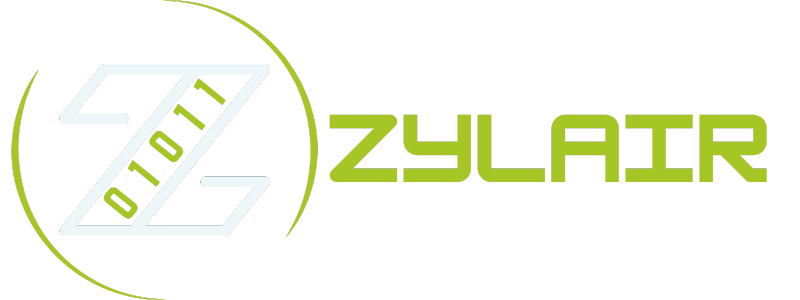The Quiet Struggle: How an Outdated EHS Process Slows You Down
I’ve been there myself—standing on the shop floor, clipboard in hand, thinking “there has to be an easier way”. Environmental Health and Safety (EHS) processes exist to keep your workplace safe, compliant, and efficient. Yet often, these very processes become hidden anchors, quietly holding back productivity, engagement, and morale. If you’re spending more hours poring over paperwork and chasing signatures than actively managing safety, it’s a strong sign something needs to change.
Let me put it frankly: safety isn’t negotiable; it’s mandatory. But when compliance and routine EHS checklists become so cumbersome that they detract from meaningful safety improvements, it’s the clearest sign your EHS process isn’t exactly working for you any longer. I’ve lost track of the number of hours our team sacrificed to gathering, validating, and manually entering data—only to realise the entire process had drifted away from the meaningful actions we first aimed for. There was nothing humble about wasting valuable talent wrestling paperwork into compliance. And it certainly wasn’t smart business.
From experience, it’s usually not your team’s willingness that’s the issue—it’s the systems holding them back. The more complex and fragmented your safety assessments or inspections become, the more likely you’ll encounter missed opportunities to catch near-misses or hazards before they escalate. To genuinely elevate your shop floor’s health and safety culture, you must first face the truth about processes designed decades ago in far less demanding working realities. I’ve seen enough failed paper trails and stalled audits to know it: an outdated EHS process chokes innovation and squelches the agile responsiveness our modern manufacturing environment demands.
Numbers That Tell You It’s Time for Change
If my humble lessons sound familiar, it’s because many of us share this challenge. According to a recent industry survey, organisations relying primarily on paper-based EHS checklists in the UK typically experience compliance reporting accuracy below 70%. That’s downright unsettling, considering how critical accuracy is when lives and livelihoods are at stake.
Another telling piece of evidence: a Health and Safety Executive (HSE) study highlighted that businesses manually managing risk and safety documentation waste approximately 15-20% of their safety team’s working hours. That’s literally days every month that skilled experts spend tied up in redundant paperwork, instead of proactively managing safety improvements and training staff.
It’s hard enough to justify the delays and headaches paper trails cause—let alone stomach the potential costs. The British Safety Council estimates workplace accidents equate directly to lost productivity of around £15 billion a year across UK industry. Inefficient or inaccurate safety processes aren’t just frustrations; they’re costly and dangerous bottlenecks. If your gut feeling tells you there has to be a smarter route, rest assured: the data wholeheartedly agrees.
How Automation Makes EHS Your Competitive Advantage
All right, let’s get a little savage here without stepping out of line: If you’re still exclusively clutching paper checklists, you’re essentially trying to WhatsApp with a rotary phone. I’ve felt the Catch-22 myself—aware improvements are necessary but unsure where to even start. The answer I found—and that many in our industry are now adopting—is digital automation.
Digitising safety reports isn’t about jumping on the trending tech bandwagon. It’s about using proven technology to free professionals from manual, repetitive tasks, so they can focus on impactful, practical improvements that genuinely move the needle. After deploying automated EHS reporting, I’ve seen dramatic improvements: clearer incident reporting, deeper operational insights, predictable audit trails, and even a measurable lift in staff morale. It enabled my team to return their attention to truly making our workplace safer, instead of just proving compliance was met last month.
With automated tools that sync real-time safety data into actionable reports, you gain transparency over your entire operation. You shift from “chasing down those last three signatures” to predicting hazards, spotting trends, and stopping safety risks before they materialise. Automation’s real power lies in enabling swift responsiveness—allowing your EHS experts to anticipate, not just react.
Real-Life Instances Where Automation Shines
To ground my own optimism in reality, here’s how automation practically improved our EHS procedures, free from jargon or fluffy hypotheticals.
One common area of tired frustration was routine safety checklists. Previously, technicians would spend hours logging inspections on printed EHS checklists. Errors were common, duplicates frequent, and fixing issues required retracing confusing paper trails. We implemented cloud-based, digital checklist solutions that technicians accessed directly from tablets on the shop floor. Inspection data is instantly stored, easily accessed, and transparent in real-time. Automated notifications alert our teams immediately when inspections were incomplete or when problematic trends appear. The manual chase became a distant memory—and overnight, employee engagement with these critical checks improved dramatically.
Incident reporting also transformed dramatically. Previously, near misses or hazards often went undocumented simply because the reporting process was tedious, slow, and filled with paperwork friction. Digital cloud-based solutions streamlined the entire process. Team members quickly capture incident details, photos, and videos via mobile devices, ensuring accurate records without fuss or delay. The ease of use dramatically increased the quality and quantity of near-miss reports, giving us far-reaching insights that enable proactive problem-solving and preventative action.
Audits—which nobody truly looks forward to, admit it—also rapidly improved. We moved to an automated solution that digitally catalogues compliance documentation, reports, and inspection records. Practically overnight, audit preparation evolved from days of chaotic scrambling to mere hours of organised routine. The auditor even complimented our preparedness— pure poetry to an EHS manager’s ears, trust me. Automation showed us clearly that organised documentation doesn’t have to be soul-destroying.
Workflow automation similarly bolstered our training and compliance accompaniments. By instantly flagging when team members were coming due for safety training renewals or qualifications, automated notifications replaced complex spreadsheets and exhausting administrative checks. Training gaps shrunk significantly, compliance became second nature, and morale improved as staff realised learning wasn’t an exercise in frustration.
These rather ordinary improvements don’t sound dramatic—but frankly, that’s part of their beauty. Efficient, automated systems quietly remove friction, allowing EHS professionals to focus on genuine acts of leadership. Safety becomes proactive, not reactive. Your team’s expertise regains its rightful significance, liberated from the boring tedium of manual checks and paperwork management. And the frontline staff who keep our workplaces thriving have better tools to maintain their own safety, expertise, and productivity.
The Humble Lesson: Make Your Processes Serve You
I’ve learnt first-hand—through successes and frankly, the odd dumb mistake—that sometimes the scariest risk is sticking too rigidly to what worked “well enough” five years ago. If your EHS process has become a sticking point rather than sharp advantage, it’s time to reflect honestly about updating your approach. Digitising your safety reports and automating your routines doesn’t have to be a daunting task; in truth, it’s the lifeline your safety culture and productivity desperately need.
Making this change not only enhanced safety dramatically—it freed my team’s capabilities and restored energy and purpose to our EHS processes. So trust me when I say that admitting to your EHS process problems and then fixing them with automation isn’t weakness. It’s savagely sensible, honestly humble, and unquestionably smart business.




